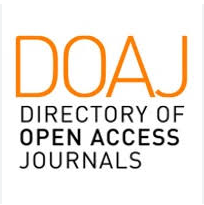THE CONSEQUENCES OF STALINIST ECONOMIC POLICY IN HUNGARY (1949-1953)
Abstract
By 1948, with the eradication of private property ownership and multi-party-system, the institutional background of the Soviet-type dictatorship was created by the Hungarian Workers Party (HWP). In economic terms, forced industrialisation became buzzword, whereas both agricultural and infrastructural development were neglected by the communist leadership. The forced collectivisation in the agriculture, accompanied by the postponement of necessary investments led to a permanent shortage of goods. Compulsory deliveries coupled with the application of the principle of quantity further aggravated the situation of the agrarian sector. As a result of aggressive campaign against the wealthy peasants and forced collectivisation, 300 000 people ceased to work in the agriculture and were employed by industry.
Within the centrally planned economy, profitability, cost of production, marketability and quality of products were neglected. Only one principle was taken into account, which was the fulfilment or overfulfilment of the global production plan index and all other criteria were ignored by decision-makers.
Foreign trade relations were embedded within the framework of the command economy. Foreign trade corporations were set up and world market prices became hermetically isolated from domestic prices. Within Comecon, the endeavour of the USSR was to reduce any dependency of the socialist bloc on world markets and to achieve self-sufficiency. The introduction of fixed prices in 1950 led to serious price distortions, whilst Hungary depended on increasing import of raw material, which was essential for the development of heavy industry. Therefore, the targets of foreign trade were not fulfilled during the period 1949-53. The irrational economic objectives of the first Five-Year Plan produced lasting damages in the national economy of Hungary.
References
Aldcroft, D. H. & Morewood, S., 1995. A new start under socialism in the 1950s and 1960s. In: Aldcroft, D. H. & Morewood, S., ed., 1995. Economic Change in Eastern Europe since 1918. Aldershot, Hants, England: Edward Elgar Publishing Limited. pp. 105-127.
Berend, I. T., 1999. Terelőúton. Szocialista modernizációs kísérlet Közép- és Kelet-Európában 1944-1990 (Detour. Attempt of socialist modernisation in Central and Eastern Europe, 1944-1990). Budapest: Vince Kiadó.
Botos, K., 2007. Rendszerváltástól rendszerváltásig. A tervutasításos gazdaságirányítás kiépülésének fénykora 1948-1956 (From the change of regime to the change of regime. The Golden Age of the centrally planned economy 1948-56). In: Botos, K. ed., 2007. Rendszerváltástól rendszerváltásig. Tanulmányok a jelenkori magyar gazdaság történetéből (From the change of regime to the change of regime. Studies about the contemporary economic history of Hungary). Heller Farkas Füzetek. Közgazdasági és Társadalomtudományi folyóirat. Vol. V. Budapest: Tarsoly Kiadó. pp. 6-27. https://jak.ppke.hu/uploads/articles/11269/file/2007..pdf (30.07.2021.)
Włodzimierz, B., 1986. 1950 to 1953: The Peak of Stalinism. In: Kaser, M. C., – Radice, E. A., ed., 1986. The Economic History of Eastern Europe, 1919-1975. Vol. III. Oxford: Clarendon Press. pp. 3-39.
Domonkos, E., 2019. Közép- és Kelet-Európa gazdaságtörténete 1945 és 1953 között. A szovjet megszállás és a sztálinista tervgazdálkodás kiépülése (Economic history of Central and Eastern Europe between 1945 and 1953. Soviet occupation and the creation of centrally planned economy). Budapest: Aposztróf Kiadó.
Gunst, P., 1996. Magyarország gazdaságtörténete 1914-1989 (Economic history of Hungary, 1914-89). Budapest: Nemzeti Tankönyvkiadó.
Honvári, J., 2005. Magyarország gazdaságtörténete Trianontól a rendszerváltásig (Economic History of Hungary from Trianon to the change of regime). Budapest: Aula Kiadó.
Berend, I. T., 2006. An Economic History of Twentieth-Century Europe. Economic Regimes from Laissez-Faire to Globalization. Cambridge: Cambridge University Press.
Berend, I. T., 1996. Central and Eastern Europe, 1944-1993. Detour from the periphery to the periphery. Cambridge: Cambridge University Press.
Jánossy, F., 1966. A gazdasági fejlődés trendvonala és a helyreállítási periódusok (The trend lines of economic growth and the periods of reconstruction). Budapest: Közgazdasági és Jogi Könyvkiadó. In: Czoch, G., Faragó, T., Kövér, Gy., Pogány, Á., Szávai, F. & Varga, Zs., ed., 2003. Magyar gazdaságtörténeti szöveggyűjtemény XVIII-XX. század. Budapest: Aula Kiadó. pp. 500-503.
Kaposi, Z., 2004. A 20. század gazdaságtörténete (Economic history of the 20th century). Budapest-Pécs: Dialóg-Campus Kiadó.
Kaposi, Z., 2002. Magyarország gazdaságtörténete 1700-2000 (Economic history of Hungary, 1700-2000). Budapest-Pécs: Dialóg-Campus Kiadó.
Lendvai, E., 2009. Mezőgazdaság (Agriculture). In: Gulyás, L., ed., 2009. A modern magyar gazdaság története. Széchenyitől a Széchenyi tervig (The contemporary economic history of Hungary. From Széchenyi to the Széchenyi plan). Szeged: JATE Press. pp. 164-166.
Matejka, H., 1986. The Foreign Trade System. In: Kaser, M., C. – Radice, E., A. ed., 1986. The Economic History of Eastern Europe, 1919-1975. Vol. III. Oxford: Clarendon Press. pp. 250-289.
Nagy, J., 2006. A parasztság helyzetének változása az első Nagy Imre kormány idején. Acta Academiae Paedagogicae Agriensis, Sectio Historiae, XXXIII, 32(1). 237-248. http://publikacio.uni-eszterhazy.hu/2325/1/237-248_Nagy.pdf (30.07.2021.)
Pető, I., & Szakács, S., 1985. A hazai gazdaság négy évtizedének története. 1945-1985. I. Az újjáépítés a tervutasításos irányítás időszaka (Four Decades of the Hungarian Economy. The period of reconstruction and the centrally planned economy). Vol I. Budapest: Közgazdasági és Jogi Könyvkiadó.
Romsics, I., 2017. Magyarország története (History of Hungary). Budapest: Kossuth Kiadó.
Romsics, I., 1999. Hungary in the twentieth century. Budapest: Corvina – Osiris.
Szakács, S., 1999. Gazdaságtörténet (Economic history). II. Budapest: BKE-Számalk.
Szávai, F., 2009. A szocialista korszak gazdasági élete (Economic life of the Socialist Era, 1945-1990). In. Gulyás, L., ed., 2009. A modern magyar gazdaság története. Széchenyitől a Széchenyi tervig (The contemporary economic history of Hungary. From Széchenyi to the Széchenyi plan). Szeged: JATE Press. pp. 147-161.
Tóth, I. Gy., 2005. A Concise History of Hungary. The History of Hungary from the Early Middle Ages to the Present. Budapest: Corvina – Osiris.


























